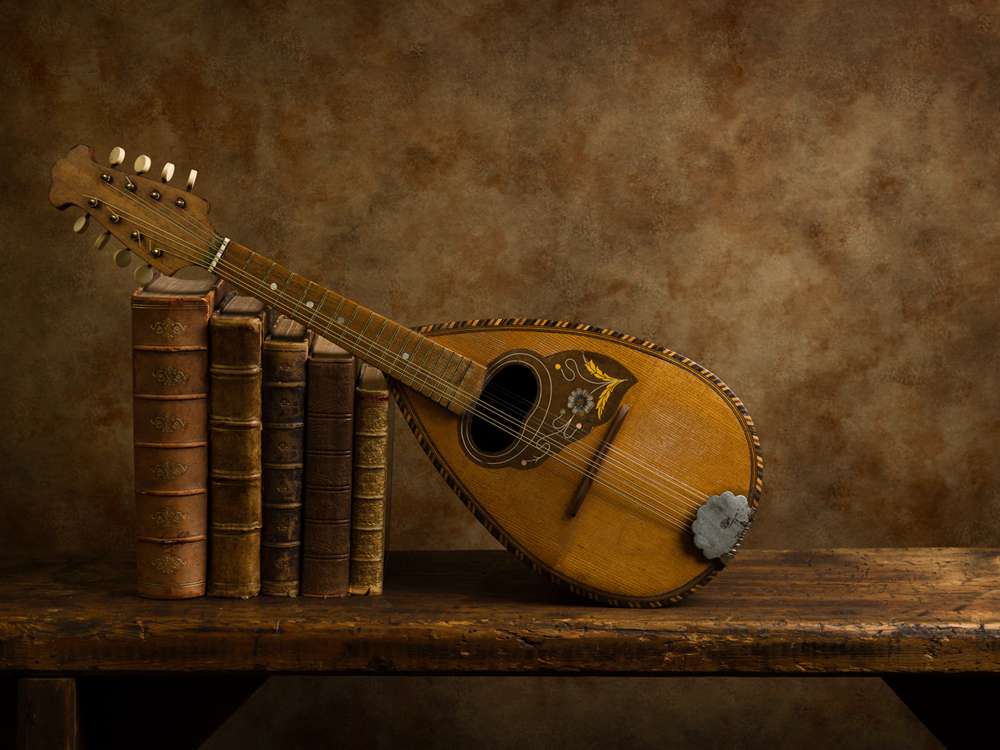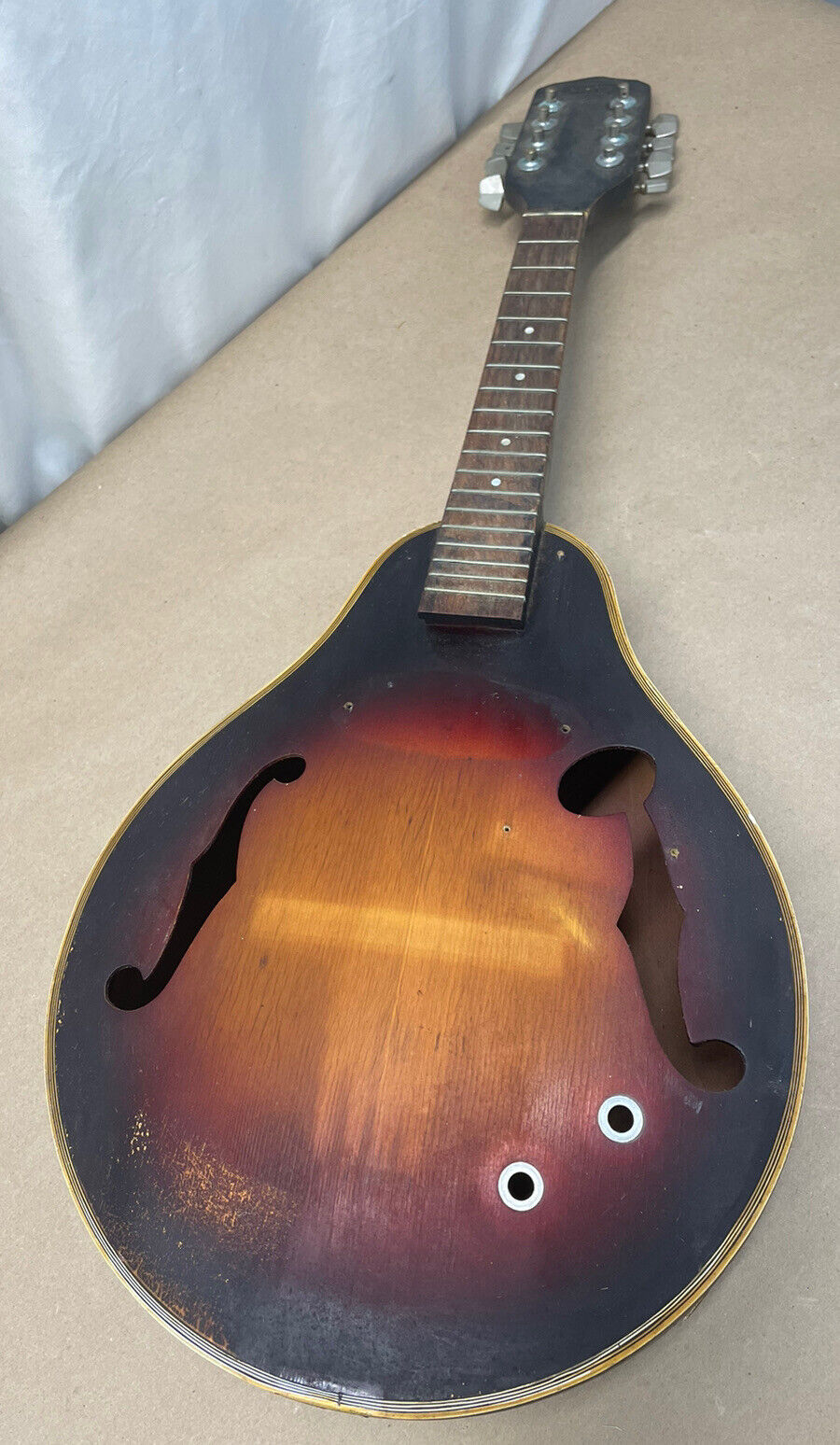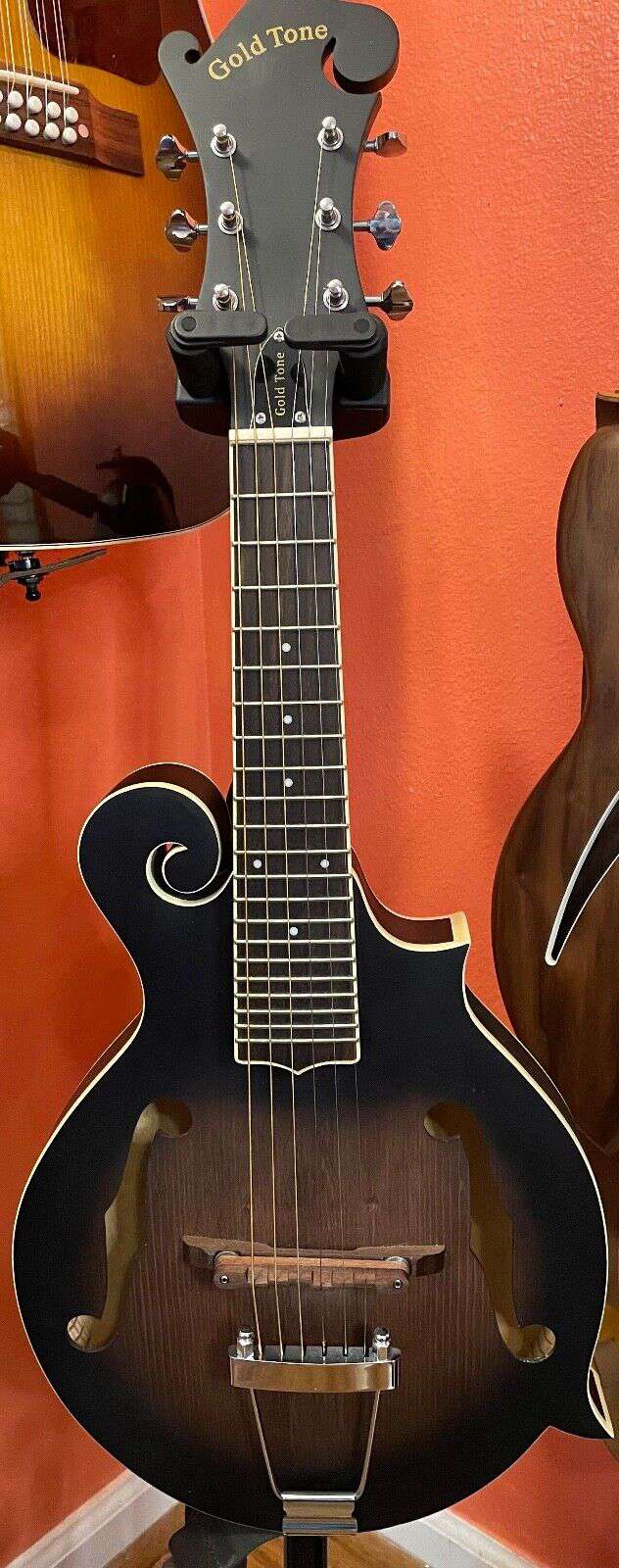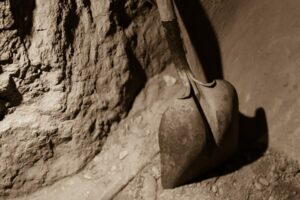The fascinating world of vintage mandolins offers a rich history and a wide range of styles, designs, and values. As collectors and enthusiasts dive into the realm of these beautiful instruments, it is crucial to understand the key aspects of identifying and valuing them. This guide will provide insights and essential tips on how to navigate the intricate landscape of vintage mandolins, enhancing one’s appreciation for their craftsmanship and historical significance.
Determining the authenticity and worth of a vintage mandolin can be a multi-faceted process. It involves examining the instrument’s serial number, headstock, and label – all of which contribute to its history and pedigree. Furthermore, style, condition, and brand can significantly affect the value of a vintage mandolin, with some costing anywhere between $300 to $1,000 or more, depending on their rarity and quality.
In order to make informed decisions regarding vintage mandolins, it is essential for collectors and enthusiasts to acquaint themselves with the distinguishing features of various models, such as the teardrop-shaped “A” Style and the nautilus-shaped “F” Style. By doing so, they will be better equipped to identify and assess these musical treasures, ensuring their continued enjoyment and preservation for future generations.
Table of Contents
The History & Evolution of Vintage Mandolins
The mandolin, a stringed musical instrument, traces its roots back to the lute family during the Renaissance era. It arrived in Europe from the Middle East and experienced a wave of popularity during the 17th and 18th centuries. The instrument continued to evolve, giving birth to various models and styles, which still remain popular today.
The earliest mandolins had a bowl-shaped back and a flat or slightly curved soundboard, with either gut, silk, or metal strings. They were known as the Baroque mandolin and the Neapolitan mandolin. The Baroque mandolin originated in Italy and had 6 to 10 strings, while the more popular Neapolitan mandolin had 8 strings and was widely used in classical music.
In the late 19th and early 20th centuries, a new trend emerged: the transformation of the instrument to suit a wider range of music genres. The development of the American-style mandolin by Orville Gibson and the subsequent founding of the Gibson Mandolin-Guitar Manufacturing Company in 1902 marked a turning point in mandolin history. The company introduced a carved-top, flat-backed design inspired by violin construction, which provided a more powerful and clearer sound.
A few notable vintage models from the Gibson Company include:
- A-style: A symmetrical teardrop-shaped body with a simple design, often used in folk music.
- F-style: With a decorative scroll and points on the body, often associated with bluegrass music due to its rich and resonant sound.
Over time, additional modifications, such as the development of the electric mandolin, helped broaden the instrument’s versatility.
Today, the world of vintage mandolins is vast and diverse, appealing to musicians and collectors alike. When identifying and valuing them, it’s essential to consider factors such as the model, condition, rarity, and sound quality. This guide provides a glimpse into the journey of the mandolin, from its humble beginnings to its current esteemed status as a beloved musical instrument.
How to Tell if Mandolin is Antique or Old
When determining whether a mandolin is antique or old, there are several factors to consider. First, take a look at the overall design and shape of the instrument. Vintage mandolins can be classified into two main categories: A Style and F Style.
- A Style mandolins: These are symmetrical and have a teardrop shape. They usually feature an oval sound hole and are commonly seen in older models.
- F Style mandolins: These have a more intricate design, featuring a carved nautilus-shaped curl on the upper left-hand bout. These are often associated with premium and vintage models.
In addition to the design and shape, another important aspect in identifying an antique or old mandolin is the headstock. Pay close attention to the following aspects:
- Logo: Many vintage mandolins have a logo or brand name on the headstock, such as Gibson or Martin. Be aware that some instruments may have had the logo removed or replaced over the years, which could make it less reliable as an identifying feature.
- Tuners: Vintage mandolins can have distinctive tuners, with some featuring three screw holes. This particular feature has been observed in Harmony-made instruments, for example.
Older, hand-carved mandolins usually cost in the range of $40 – $100, while branded models can cost between $300 and $1,000, provided they are in good condition. Flat-back mandolins, which are newer, have a larger body and a longer scale length, resulting in a different price range.
Another factor that may help in ascertaining the age and origin of a mandolin is the case it comes in. Some cases have logos or information on them that may indicate the manufacturer or time period. While this is not always a foolproof method, it can offer useful clues regarding the mandolin’s history.
Overall, determining if a mandolin is antique or old involves a combination of factors and observations. However, the design, headstock features, and any accompanying case can provide important insights that guide the identification process.
Iconic Vintage Mandolin Brands
Gibson Mandolins
Gibson is a well-known American brand that produces a variety of musical instruments, one of which is the mandolin. It is particularly famous for its early 20th-century “A-style” and “F-style” mandolins. These models have distinct features:
- A-style: Symmetrical, teardrop-shaped body
- F-style: Distinct carved nautilus curl on the upper left-hand bout
Vintage Gibson mandolins hold high value in today’s market, with some models fetching prices of over $5,000. Look for logos on the headstock to help determine the authenticity of the instrument.
Martin Mandolins
Another famous American brand, Martin, is known predominantly for guitars. However, they produced mandolins as well. They primarily manufactured flatback mandolins between the late 19th and early 20th centuries. Vintage Martin mandolins can be identified with the brand logo or name on the headstock.
Martin mandolins are not as highly valued as their guitars, but they still have a respected place in the vintage market and are considered valuable collectibles.
Harmony Mandolins
Harmony was a budget-friendly brand popular in the 1920s and 1930s. Their mandolins, often made of birch, can be identified by similarities to Regal mandolins. Harmony’s instruments may have been sold under the “Supertone” brand by Sears, Roebuck. Although not as valuable as Gibson or Martin models, vintage Harmony mandolins still have value for collectors and enthusiasts.
Bowlback Mandolins
Bowlback mandolins, also known as Neapolitan mandolins, have a deep, rounded back. They were popular in the late 19th to early 20th centuries, particularly in Italy. Vintage bowlback mandolins can be identified by their shape, ornate inlays, and specific labels by makers like Vinaccia or Calace.
While not as highly valued as some American-made mandolins, vintage bowlback mandolins are still collected and have a place on the vintage market.
Identifying Vintage Mandolins
Headstock Logos
When trying to identify a vintage mandolin, one of the first things to look for is the logo or branding on the headstock. Many mandolin makers, especially well-known brands, will have distinctive logos or markings to help identify the instrument’s origin. Some common vintage mandolin brands to look for include Gibson, Harmony, and Supertone. It’s important to note that some more obscure brands may not have a visible logo, or it may have faded due to age.
Serial Numbers and Labels
Another key aspect in identifying a vintage mandolin is through serial numbers and labels. Serial numbers are usually found at the back of the headstock or on the label inside the mandolin. These numbers can give information about the production year and sometimes even the specific model. Labels inside the mandolin often contain additional information such as the maker, model, and sometimes even the location where it was made. It’s important to cross-reference the serial number with the known information for specific brands to ensure accuracy.
Unique Features and Inlays
Looking for unique features and inlays can also help to identify a vintage mandolin. Different brands and models have distinctive features or inlays on the fretboard and body that can aid in identification. For example, Gibson’s “A” Style mandolins were symmetrical and teardrop-shaped, while their “F” Style mandolins have a carved nautilus-shaped curl on the upper left-hand bout. Other brands may have unique binding, pickguards, or even specific wood inlays that can help identify them.
Construction and Craftsmanship
Lastly, the construction and craftsmanship of the mandolin can play a significant role in identification. Hand-carved instruments may indicate an older or more valuable mandolin, while factory-produced mandolins may be more recent and less valuable. Additionally, the type of wood, hardware, and overall quality of the instrument can help determine its origin and value. Take note of any inconsistencies or unique features in the mandolin’s construction to help pinpoint its origins.
8 Factors to Identify & Value Vintage Mandolins
1. Age
The age of a vintage mandolin plays a crucial role in determining its value. Vintage mandolins typically date back to at least the early 20th century. To accurately appraise a vintage mandolin, evaluating its age should be a top priority. Across various makes and models, the impact of age can differ significantly.
To begin, authenticating a vintage mandolin might involve checking serial numbers and maker’s labels or researching reputable sources about the specific make and model. The differences in age can directly impact its value due to factors such as rarity, historical significance, and overall condition.
For the purpose of clarity, the table below presents an average valuation of vintage mandolins based on their age:
| Mandolin Age | Average Valuation |
|---|---|
| Pre-1900 | $8,000 – $12,000 |
| Early 20th Century (1900-1930) | $4,000 – $8,000 |
| Mid 20th Century (1931-1960) | $2,000 – $4,000 |
| Late 20th Century (1961-2000) | $1,000 – $2,000 |
It is important to note that individual mandolin values can vary greatly from the above table due to factors such as condition, brand, and model. Examining the mandolin’s physical appearance, including wear and tear, can help in narrowing down its age. Older mandolins may show signs of more extensive usage and age-related deterioration, whereas newer models will often appear shiny with few to no scratches or scuffs.
In some cases, the specific history of a vintage mandolin can add to its value. For instance, if the mandolin was owned by a famous musician or has an interesting provenance, it may fetch a higher price.
In conclusion, understanding the influence of a mandolin’s age on its value is an essential aspect of collecting and appraising vintage mandolins. By investing time in researching the age and history of a particular make and model, collectors can confidently appraise their instruments and ensure they are appropriately valued.
2. Brand
When it comes to identifying and valuing vintage mandolins, the brand plays a significant role in determining the worth of the instrument. Some well-known brands that have a lasting reputation in the vintage mandolin market include Gibson, Epiphone, and Martin. Each of these brands carries distinct features, craftsmanship, and historical significance which can impact their value.
Gibson
Gibson is a highly sought-after brand for vintage mandolins, known for their exquisite craftsmanship and distinct design. Some popular Gibson mandolin models include the A-style, F-style, and the highly collectible Gibson Army Navy mandolins.
| Gibson Model & Style | Average Valuation |
|---|---|
| A-style | $1,500 – 3,000 |
| F-style | $4,000 – 10,000 |
| Army Navy | $2,000 – 5,000 |
Epiphone
Epiphone, another reputable brand, has produced a range of mandolins over the years. Collectors often look for vintage Epiphone mandolins from the early 20th century due to their solid construction and unique designs. The MM-series is a popular choice among vintage Epiphone mandolin enthusiasts.
| Epiphone Model & Style | Average Valuation |
|---|---|
| MM-series | $1,000 – 2,000 |
| Other vintage models | $500 – 1,500 |
Martin
Martin is a renowned brand known for its high-quality acoustic instruments, including vintage mandolins. The brand’s early 20th-century Style A and Style B mandolins are highly valued by collectors, with an emphasis on those made between the years 1914 and 1931.
| Martin Model & Style | Average Valuation |
|---|---|
| Style A (1914-1931) | $1,500 – 3,500 |
| Style B (1914-1931) | $2,000 – 4,000 |
In conclusion, the brand of a vintage mandolin plays a significant role in determining its value, with Gibson, Epiphone, and Martin being amongst the most sought after by collectors. Familiarizing oneself with the unique characteristics and historical significance of these brands can help in identifying and appraising vintage mandolins.
3. Materials
Vintage mandolins are made from a variety of materials, which play a significant role in their value and identification. In general, high-quality materials such as solid woods and intricate craftsmanship add to a mandolin’s worth. The following paragraphs discuss some common materials found in vintage mandolins and their impact on valuation.
One of the most sought-after materials in vintage mandolins is solid wood construction. Mandolins made from solid woods like maple, spruce, and rosewood are generally more valuable than those made from laminate materials. The type of wood used also has an impact on the instrument’s tone, with spruce typically providing a brighter sound and maple offering a warm, rich tone.
Another factor to consider is the quality of craftsmanship. Hand-carved mandolins, particularly those made by renowned manufacturers like Gibson or Martin, often hold higher value due to the skill and attention to detail involved in their creation. In contrast, mass-produced or factory-made mandolins may not have the same level of quality and are generally less valuable.
It’s also important to take note of hardware and finishes when assessing the value of a vintage mandolin. Some examples are the presence of an original sunburst finish or unique tuners, which can increase the mandolin’s value. Below is a table showcasing several factors related to materials and their average valuations:
| Material-Related Factor | Average Valuation |
|---|---|
| Solid maple construction | $1,000 – $1,200 |
| Solid spruce construction | $800 – $1,000 |
| Laminate wood construction | $300 – $500 |
| Hand-carved by Gibson or Martin | $3,000 – $6,000 |
| Factory-made, mass-produced | $200 – $500 |
| Original sunburst finish | $1,200 – $1,500 |
| Unique tuners | $700 – $900 |
4. Finishes
Vintage mandolins come in a variety of finishes, which can also impact their value depending on factors such as quality, originality, and condition. There are mainly two types of finishes found on these instruments: varnish and nitrocellulose lacquer. Varnish finishes tend to provide a more natural and authentic appearance, while nitrocellulose lacquer finishes often result in a high shine, giving the instrument a glossy and modern look.
Over time, the finish on a vintage mandolin may have been worn down, cracked, or damaged due to age, exposure to sunlight, and environmental factors. Additionally, some mandolins may have had their finishes refinished at some point in their life, which can affect their value.
5. Styles
Bowl-back Mandolins
Bowl-back mandolins, also known as Neapolitan or tater bug mandolins, have a rounded back made from multiple wood strips and are based on traditional Italian designs. These instruments typically have a shorter scale length and a more mellow tone. The value of bowl-back mandolins varies greatly depending on the brand and condition. Usually, these old, hand-carved mandolins are priced around $40 – $100. However, a branded model in good condition can cost from $300 to $1,000.
Flat-back Mandolins
Flat-back mandolins have a flat back with a larger body and longer scale length. These instruments usually feature a more modern design and produce a brighter and louder sound compared to bowl-back mandolins. The value of flat-back mandolins similarly ranges widely, depending on factors such as age, brand, and condition.
Here is a table showing the average valuation of vintage mandolin styles:
| Mandolin Style | Average Valuation |
|---|---|
| Bowl-back: Hand-Carved | $40 – $100 |
| Bowl-back: Branded | $300 – $1,000 |
| Flat-back | Varies |
A-Style Mandolins
A-Style mandolins are symmetrical, teardrop-shaped instruments. They are generally more affordable compared to F-Style mandolins and produce a well-balanced tone suitable for various music genres. The price of an A-Style mandolin can range from a few hundred dollars to several thousand dollars, depending on factors like brand, materials, and craftsmanship.
F-Style Mandolins
F-Style mandolins are characterized by their carved scroll, found on the upper left-hand bout of the body. These instruments often have more intricate designs and higher-quality materials, resulting in a higher price compared to A-Style mandolins. F-Style mandolins are particularly popular among bluegrass players due to their powerful sound and projection. The value of F-Style mandolins can reach well over $10,000, depending on factors such as brand, age, and condition.
6. Sound Quality
The sound quality of a vintage mandolin plays a crucial role in its overall value. Several factors contribute to the tonal characteristics and acoustics of a mandolin. For instance, the wood used, the shape and size of the body, and the craftsmanship all have a significant impact on its sound.
Mandolins constructed with high-quality tonewoods like spruce or maple tend to produce superior sound and, thus, have a higher value. Additionally, the condition of these woods and their age can play a part in determining the value of the instrument. Mandolin designs also play a part in the sound. A-style and F-style mandolins each have their unique sound qualities, with F-style mandolins often being preferred by bluegrass players for their defined “choppy” sound.
Furthermore, the craftsmanship of the mandolin can greatly affect the sound quality. High-quality construction, vintage hand-carving, and proper maintenance throughout the years will have a positive impact on the overall sound of the instrument.
Here is a valuation table showcasing the impact of sound quality factors on a vintage mandolin’s appraisal:
| Sound Quality Factor | Average Valuation |
|---|---|
| High-Toned Wood (Spruce, Maple) | $600 – 700 |
| Average-Toned Wood (Mahogany, Birch) | $300 – 400 |
| A-Style Mandolin (Mellow Tone) | $200 – 300 |
| F-Style Mandolin (Choppy Tone) | $400 – 500 |
| Superior Craftsmanship | $450 – 600 |
| Average Craftsmanship | $150 – 300 |
7. Original Case
When identifying and valuing vintage mandolins, the original case can play a significant role in the assessment. An original case can provide insights into the mandolin’s age, the manufacturer, and the instrument’s overall condition. Having the appropriate accompanying case can support the value of the instrument as it grows older, especially for collectors and enthusiasts.
Vintage mandolin cases come in a variety of styles and materials. Some key characteristics to consider when assessing the value of a mandolin case include the construction material, the condition, and any brand-specific features such as logos or unique design elements. Additionally, the presence of original documents, like purchase receipts and manufacturer certificates, can further enhance the value of the mandolin.
8. Signature Models
Signature models of vintage mandolins often carry a higher value compared to standard models. These mandolins have distinct features or are associated with well-known artists or companies. Collectors and enthusiasts generally seek out these models due to their rarity and historical significance.
Some examples of signature models include Gibson’s F-5 Mandolin, designed by Lloyd Loar in the early 1920s. Loar’s signature is found on the labels inside these mandolins, making them highly sought after by collectors. Similarly, Martin’s Style 15 and 20 mandolins made in the early 20th century are known for their unique styling, craftsmanship, and sound. Other known signature models feature specific artists, such as Bill Monroe’s Gibson F-5 model.
It is essential to carefully assess the condition of signature model mandolins to determine their value. Factors such as originality, rarity, and provenance play a significant role in their valuation.
Here is a valuation table for some signature models and their average market prices:
| Signature Model | Average Valuation |
|---|---|
| Gibson F-5 (Lloyd Loar) | $75,000 – $200,000 |
| Martin Style 15 | $1,500 – $3,000 |
| Martin Style 20 | $2,000 – $5,000 |
| Bill Monroe Gibson F-5 | $15,000 – $35,000 |
Final Thoughts
When identifying and valuing vintage mandolins, there are several key factors to consider. First and foremost, examine the instrument carefully for logos or brand names, typically located on the headstock. Brands such as Gibson and Martin are often associated with higher values, but remember that some vintage mandolins may have had their logos removed or replaced over the years.
Additionally, consider the overall shape and design of the mandolin. Headstock shape, number of frets, and unique aspects of the instrument can help provide clues as to its age and origin. For example, older hand-carved mandolins may feature a round or oval sound hole and typically hold values between $40 – $100. Meanwhile, flat-back mandolins with a larger body and longer scale length can range between $300 – $1,000 if in good condition and from a reputable brand.
It’s important to research the specific model and characteristics of any vintage mandolin. Consulting reference materials, such as George Gruhn’s Guide to Vintage Guitars, can be an invaluable resource for narrowing down the instrument’s age, maker, and potential value. Keep in mind, however, that serial numbers may not always be a reliable method for dating instruments, especially those made between 1910 and 1940.
Lastly, when identifying and valuing a vintage mandolin, take note of the instrument’s overall condition. Scratches, cracks, and missing parts can significantly affect the value, so it’s essential to evaluate any damage carefully. Seek professional advice if needed, particularly if considering purchasing or selling a vintage mandolin at a specific price point.
In summary, identifying and valuing vintage mandolins requires careful observation, research, and knowledge of the instrument’s characteristics and history. By paying attention to these details, one can confidently navigate the world of vintage mandolins and appreciate the unique qualities that they offer.
FAQ
How can I identify a vintage mandolin?
There are three primary aspects to consider:
- Serial number: typically found at the back of the headstock or on the label inside the mandolin
- Headstock: the design and logo on the headstock can indicate the manufacturer and model
- Label: some vintage mandolins have labels inside the soundhole or body, indicating the manufacturer, model, and date
What are the main types of vintage mandolins?
- A-Style: symmetrical, teardrop-shaped mandolins
- F-Style: ornate design with a carved nautilus-shaped curl on the upper left-hand bout
What is the general value range for vintage mandolins?
- Unbranded, hand-carved mandolins: $40 – $100
- Branded models in good condition: $300 – $1,000
What factors can affect the value of a vintage mandolin?
- Condition: well-preserved instruments with minimal wear will typically be more valuable
- Rarity: rare models or limited production runs can increase the value
- Demand: certain brands and models may have a higher demand among collectors and musicians
How can I determine the value of my vintage mandolin?
- Research: use resources such as price guides, auction websites, and online forums to gather information on your specific mandolin model
- Compare: compare your mandolin to similar models that have recently sold or are currently for sale to determine a potential value range
- Expertise: consult with experts or appraisers for an accurate valuation of your instrument











